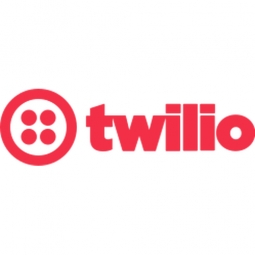Technology Category
- Platform as a Service (PaaS) - Application Development Platforms
- Platform as a Service (PaaS) - Device Management Platforms
Applicable Industries
- Electronics
- Telecommunications
Applicable Functions
- Product Research & Development
Use Cases
- Onsite Human Safety Management
- Speech Recognition
Services
- System Integration
- Testing & Certification
About The Customer
The Parkinson's Voice Initiative is a team of mathematicians and clinicians based in Cambridge, MA. The initiative was founded in 2012 by Max Little, a mathematician and TED fellow who has been analyzing the human voice from a mathematical perspective since studying for his PhD at Oxford University in 2003. The initiative aims to use voice recordings to detect Parkinson's disease, potentially improving treatment management for those affected. The team developed a set of computer algorithms that can analyze fluctuations, tremors, and other symptoms in voice recordings, effectively detecting the presence of symptoms associated with the disease.
The Challenge
Parkinson's disease is a degenerative disorder of the central nervous system affecting around six million people today, with projections indicating a rise to almost 10 million by 2030. The Parkinson's Voice Initiative, a team of mathematicians and clinicians, aimed to develop a low-cost test to identify patients with Parkinson's symptoms using voice recordings. The challenge was to accurately record phone calls from around the world, analyze the voice fluctuations, tremors, and other symptoms, and compare them against sample sets of both Parkinson's sufferers and healthy individuals. The team needed a robust solution that could handle large volumes of call data and ensure a high level of accuracy.
The Solution
The team developed a set of computer algorithms that could analyze symptoms in voice recordings. They used Twilio, a cloud communications platform, to record and analyze calls made by patients with Parkinson's. Participants were given a local Twilio phone number to call from any voice call enabled device. After a brief recorded prompt, participants submitted around 20-30 seconds of steady 'ahhh' voice recording. Twilio sent this data to Parkinson's Voice's programmable PHP-based platform, which collected, analyzed, and stored the recordings. The initiative also collated and contrasted this voice data with self-reported symptom data provided by health-focused social network, PatientsLikeMe, to verify symptom predictions based on the voice recordings. Twilio's robust system allowed for a 100% capture rate, ensuring the accuracy needed for the initiative.
Operational Impact
Quantitative Benefit

Case Study missing?
Start adding your own!
Register with your work email and create a new case study profile for your business.
Related Case Studies.

Case Study
Remote Temperature Monitoring of Perishable Goods Saves Money
RMONI was facing temperature monitoring challenges in a cold chain business. A cold chain must be established and maintained to ensure goods have been properly refrigerated during every step of the process, making temperature monitoring a critical business function. Manual registration practice can be very costly, labor intensive and prone to mistakes.

Case Study
Predictive maintenance in Schneider Electric
Schneider Electric Le Vaudreuil factory in France is recognized by the World Economic Forum as one of the world’s top nine most advanced “lighthouse” sites, applying Fourth Industrial Revolution technologies at large scale. It was experiencing machine-health and unplanned downtime issues on a critical machine within their manufacturing process. They were looking for a solution that could easily leverage existing machine data feeds, be used by machine operators without requiring complex setup or extensive training, and with a fast return on investment.

Case Study
Cloud Solution for Energy Management Platform-Schneider Electric
Schneider Electric required a cloud solution for its energy management platform to manage high computational operations, which were essential for catering to client requirements. As the business involves storage and analysis of huge amounts of data, the company also needed a convenient and scalable storage solution to facilitate operations efficiently.










